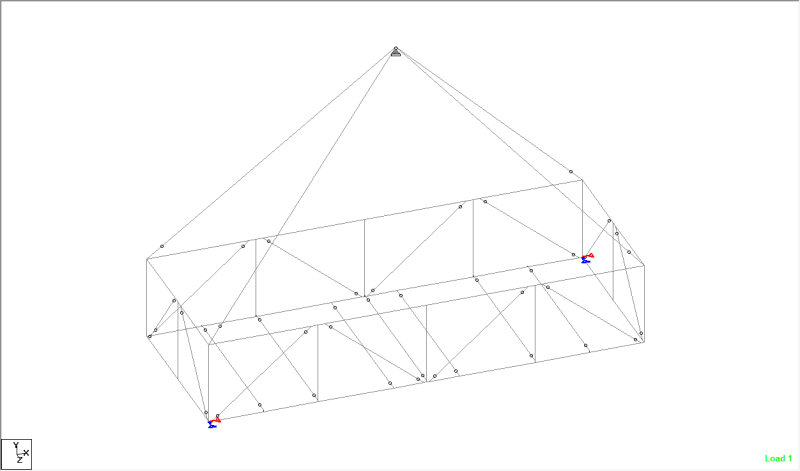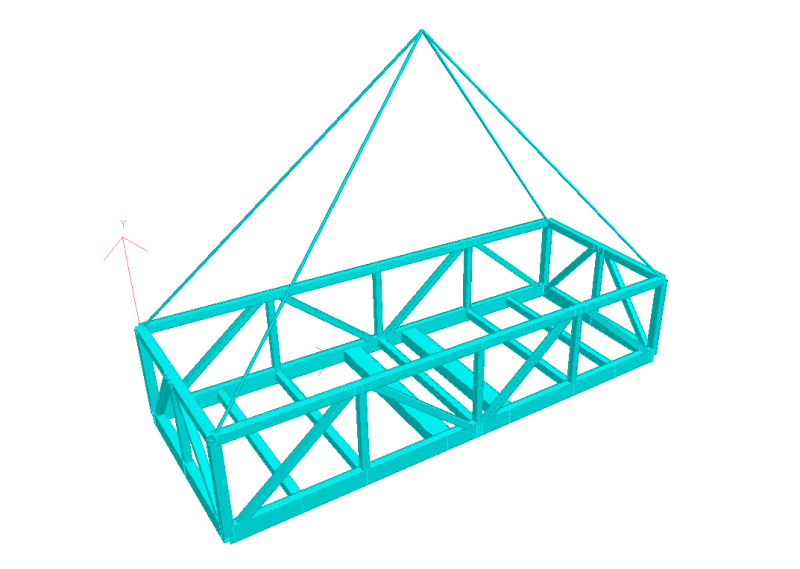volunteera
Structural
I am analysing an open top offshore container with Staad pro. It is a 20ft container made out of HSS truss walls with eccentric KT-connections. As one can notice from below pictures, diagonal web members of side and end walls (which are released from translating moment in all directions) are eccentrically attached to top and bottom chord joints. To illustrate this I modelled each of the eccentric distance into a separate beam member. This allows to transfer axial load from diagonal webs into chords correctly which adds value into moment diagram of the chords.
Another option would be attaching the webs directly to the joints and using offset tool however then it ignores additonal moment value originated by diagonal web axial force in offset distance from the joint.
My questions are:
What is your preference in modelling of such KT type eccentric connections?
When analysing such structure do you release vertical web from moment translation as well?


Another option would be attaching the webs directly to the joints and using offset tool however then it ignores additonal moment value originated by diagonal web axial force in offset distance from the joint.
My questions are:
What is your preference in modelling of such KT type eccentric connections?
When analysing such structure do you release vertical web from moment translation as well?


